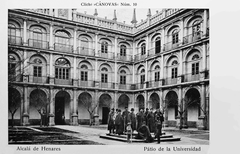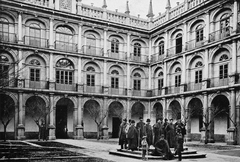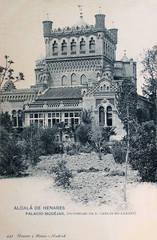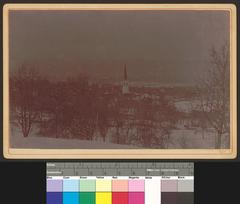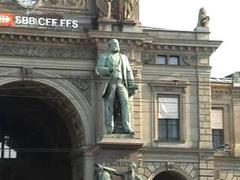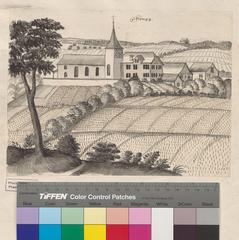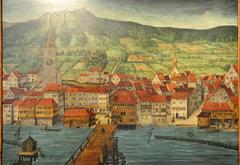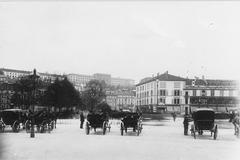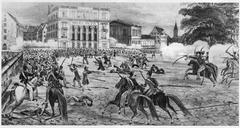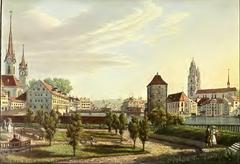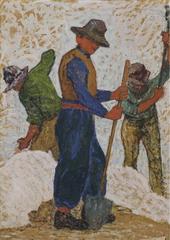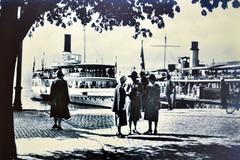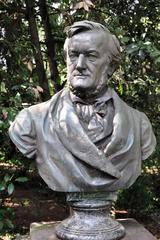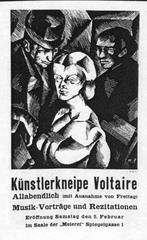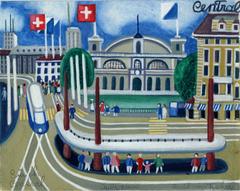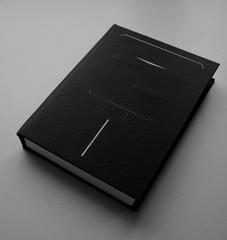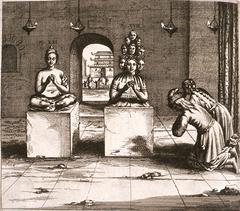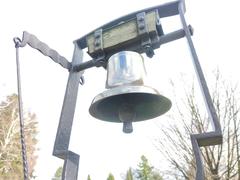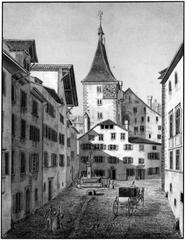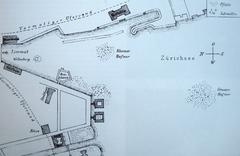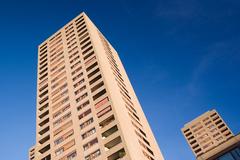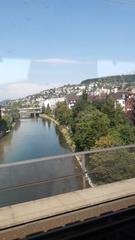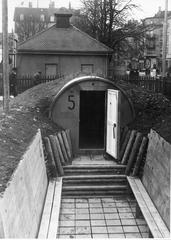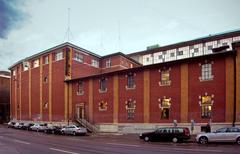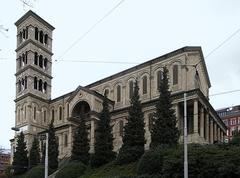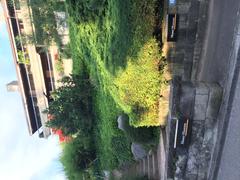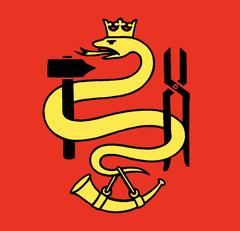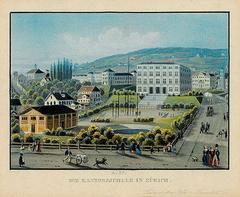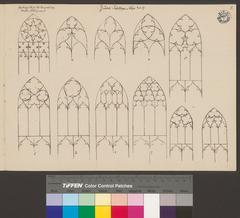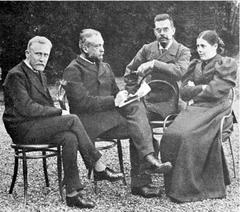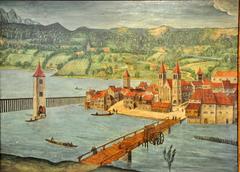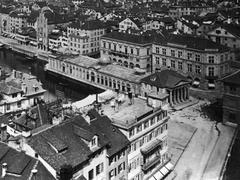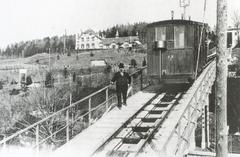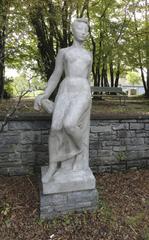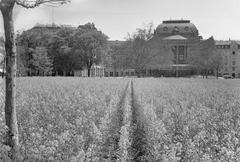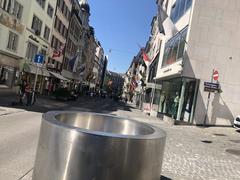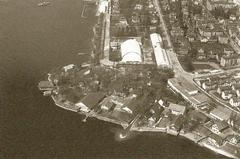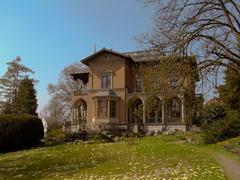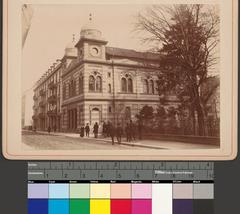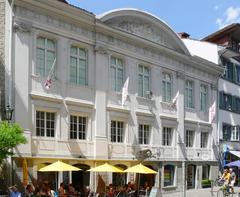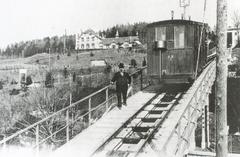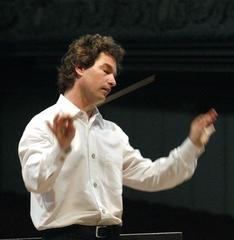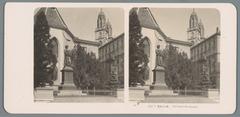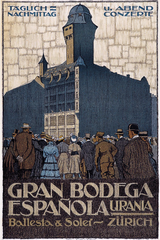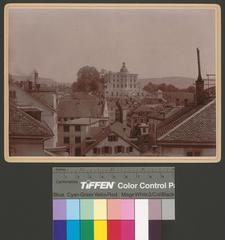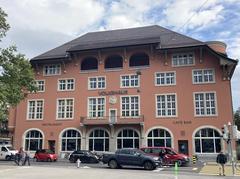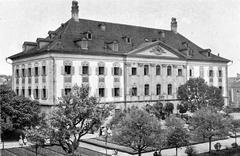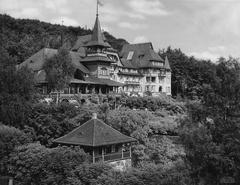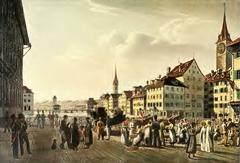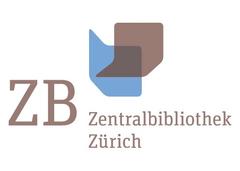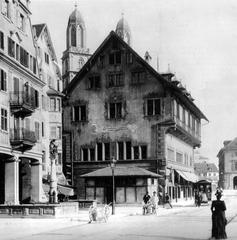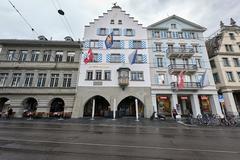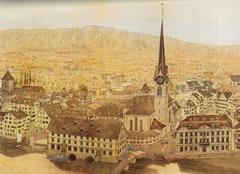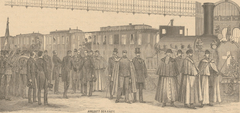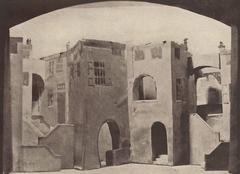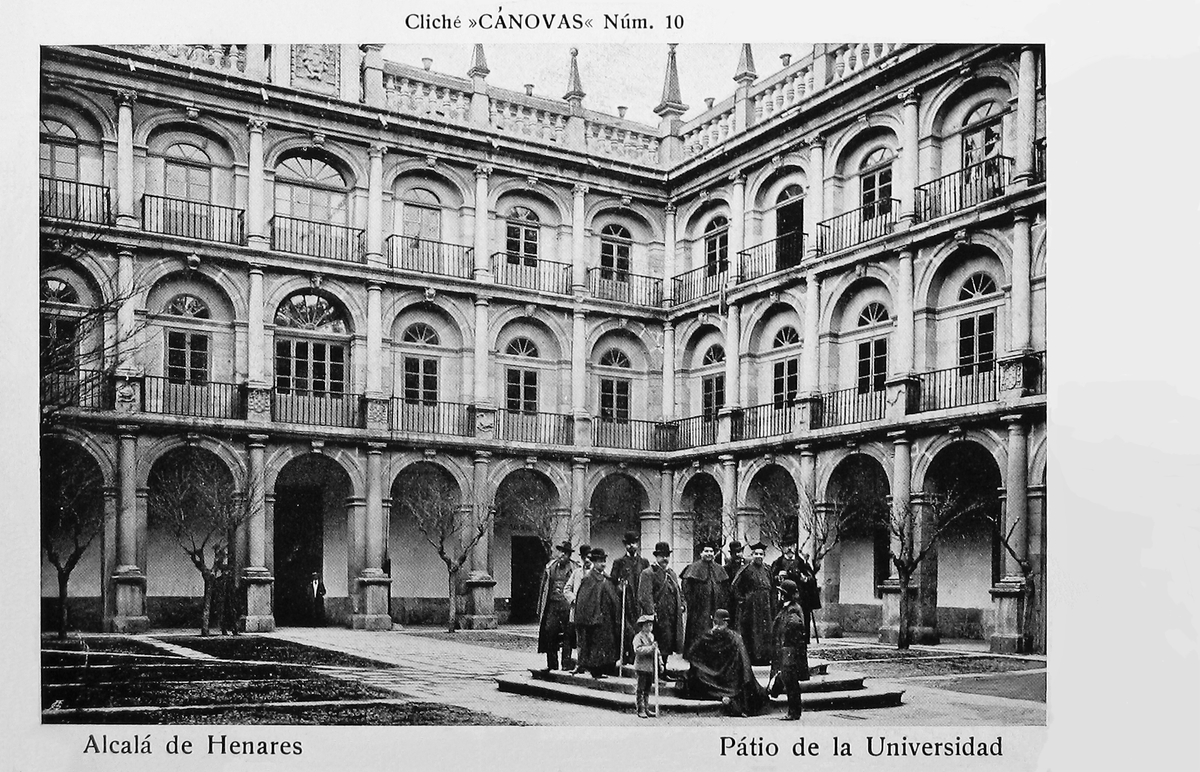
ETH Library Zurich: Visiting Hours, Tickets, and Historical Significance
Date: 14/06/2025
Introduction: The ETH Library Zurich Experience
Located in the heart of Zürich, the ETH Library stands as Switzerland’s largest public scientific and technical library, symbolizing over 160 years of academic excellence and cultural heritage. Founded in 1855 alongside the Swiss Federal Institute of Technology Zurich (ETH Zürich), the library has evolved into a central repository of knowledge, supporting research, innovation, and public engagement. With approximately 17 million analog and digital media items, the library offers extensive collections, rare manuscripts, graphic arts, and archives of national and international significance (ETH Library; Graphische Sammlung ETH Zürich).
Housed in the historic main building designed by Gottfried Semper, the ETH Library is not only an academic hub but also an architectural and cultural landmark. It provides free entry, accessible facilities, guided tours, and exhibitions that showcase Zürich’s vibrant intellectual and artistic history (ETH Zürich Hauptgebäude; ETH Zurich Exhibitions).
Whether you are a scholar, history enthusiast, or a traveler keen to explore Zürich’s scientific legacy, this guide presents essential details about visiting hours, tickets, collections, accessibility, travel tips, and nearby attractions at the ETH Library (ETH Library Visiting Hours; e-rara.ch; ETH Zürich Visit page).
Table of Contents
- Origins and Early Development
- Expansion, Collections, and Specialization
- Architectural and Cultural Significance
- Collections of National and International Importance
- Visitor Information: Hours, Tickets, Accessibility
- Public Engagement and Knowledge Dissemination
- Visuals, Virtual Tours, and Media
- Frequently Asked Questions (FAQ)
- Nearby Attractions and Travel Tips
- Conclusion: Legacy, Future Directions, and How to Plan Your Visit
- References
1. Origins and Early Development
The ETH Library (ETH-Bibliothek) was established in 1855 as the central academic library of ETH Zürich. Its initial focus was to provide foundational scientific and technical literature for the university’s departments, quickly evolving into Switzerland’s foremost repository of scientific knowledge (ETH Library). By the late 19th century, the library expanded its collections to include rare books, manuscripts, and technical manuals, reflecting the intellectual growth during the Industrial Revolution (e-rara.ch).
2. Expansion, Collections, and Specialization
With ETH Zürich’s rise as a global research institution, the library’s holdings grew to encompass around 17 million analog and digital items (ETH Library Open Data). Notable among its specialized collections is the Graphische Sammlung ETH Zürich, one of the country’s largest graphic arts repositories, founded in 1867 and home to over 160,000 works on paper from the 15th century to today (Graphische Sammlung ETH Zürich). The library also supports subject-specific branches for mathematics, computer science, architecture, and engineering.
3. Architectural and Cultural Significance
The ETH Library resides in the ETH Zürich main building, an architectural masterpiece by Gottfried Semper completed in 1864 (ETH Zürich Hauptgebäude). Since 1924, the Graphische Sammlung has been housed in rooms designed to protect delicate artworks, merging scientific and artistic heritage. This integration reflects ETH’s commitment to knowledge, culture, and public engagement.
4. Collections of National and International Importance
Key highlights include:
- Rare Books and Manuscripts: Early scientific treatises and historical maps, many digitized for global access (e-rara.ch).
- Archives of Contemporary History: Documents chronicling Swiss history from the late 19th century (ETH Zurich Exhibitions).
- Thomas Mann and Max Frisch Archives: Preserving the legacies of renowned literary figures with manuscripts, correspondence, and personal effects.
- Scientific Instruments and Collections: Historic apparatus demonstrating the evolution of scientific education, some exhibited permanently in the Semper Observatory.
5. Visitor Information: Hours, Tickets, Accessibility
- Opening Hours: The main library reading room is open Monday to Friday, 8:00–22:00, and weekends, 9:00–17:00. Branch libraries have varying schedules (ETH Library Opening Hours).
- Entry and Tickets: Entry is free for all visitors. Some special exhibitions or guided tours may require advance booking and a small fee (ETH Zurich Exhibitions).
- Guided Tours: Available by appointment, including specialized tours of the Graphische Sammlung and scientific collections.
- Accessibility: The library offers barrier-free access, adapted workspaces, and assistance for visitors with disabilities.
- Registration: General access is open, but borrowing privileges require registration. Temporary library cards are available for external visitors.
- Transportation: Easily accessible by tram lines 6, 10, and 15, stopping at ETH/Universitätsspital. Limited parking is available; public transport is recommended (ETH Zürich Visit page).
6. Public Engagement and Knowledge Dissemination
The ETH Library is a leader in digitizing cultural heritage, making rare materials accessible worldwide via platforms like e-rara.ch. The library supports research, teaching, and public events, with regular exhibitions, lectures, and open-access digital resources. Special exhibitions, such as “Colonial Traces – Collections in Context” (2024–2025), highlight the intersection of science, history, and society (ETH Zurich Exhibitions).
7. Visuals, Virtual Tours, and Media
Visitors can preview the library’s architecture and collections through high-quality images, virtual tours, and 3D models available on the ETH Library website. Descriptive alt text and optimized keywords such as “ETH Library Zürich visiting hours” and “Graphische Sammlung ETH Zürich prints” enhance accessibility and searchability.
8. Frequently Asked Questions (FAQ)
Q: Is there an entry fee to visit the ETH Library?
A: No, general entry and most exhibitions are free.
Q: What are the ETH Library Zürich visiting hours?
A: Monday–Friday: 8:00–22:00, Saturday–Sunday: 9:00–17:00. Check the website for branch hours.
Q: Can I book a guided tour?
A: Yes, guided tours are available by appointment.
Q: Is the library accessible for wheelchair users?
A: Yes, with barrier-free entrances and adapted facilities.
Q: Can visitors access rare collections online?
A: Many rare books and manuscripts are digitized on e-rara.ch.
Q: How do I reach the library by public transport?
A: Tram lines 6, 10, and 15 stop at ETH/Universitätsspital.
9. Nearby Attractions and Travel Tips
Enhance your visit by exploring nearby Zürich landmarks:
- Grossmünster Church: Iconic Romanesque church.
- Swiss National Museum: Swiss cultural history exhibitions.
- Niederdorf Old Town: Medieval streets with shops and cafes.
- Lake Zurich Promenade: Scenic walks and relaxation.
Travel Tips:
- Dress in layers; Zürich weather can be changeable.
- Use the MeteoSwiss app for weather updates.
- Lockers are available for luggage in the main building.
10. Conclusion: Legacy, Future Directions, and How to Plan Your Visit
The ETH Library stands as a monument to Switzerland’s scientific advancement and cultural heritage. It continues to innovate in digital access, open scholarship, and public engagement, ensuring that its resources remain accessible to scholars and visitors worldwide. Centrally located and surrounded by Zürich’s historical sites, the library is an essential destination for anyone interested in science, history, or culture.
Plan your visit today:
- Check ETH Library Official Website for up-to-date hours, exhibitions, and events.
- Download the Audiala mobile app for interactive tours and visitor tips.
- Follow ETH Library on social media for news and exhibition updates.
11. References
- ETH Library Official Website
- Graphische Sammlung ETH Zürich
- ETH Zürich Hauptgebäude
- ETH Zurich Exhibitions
- e-rara.ch
- ETH Zürich Visit page
- ETH Library Locations and Opening Hours
- MeteoSwiss app
- Swiss National Museum
- Research Collection
- extract Exhibition Space
